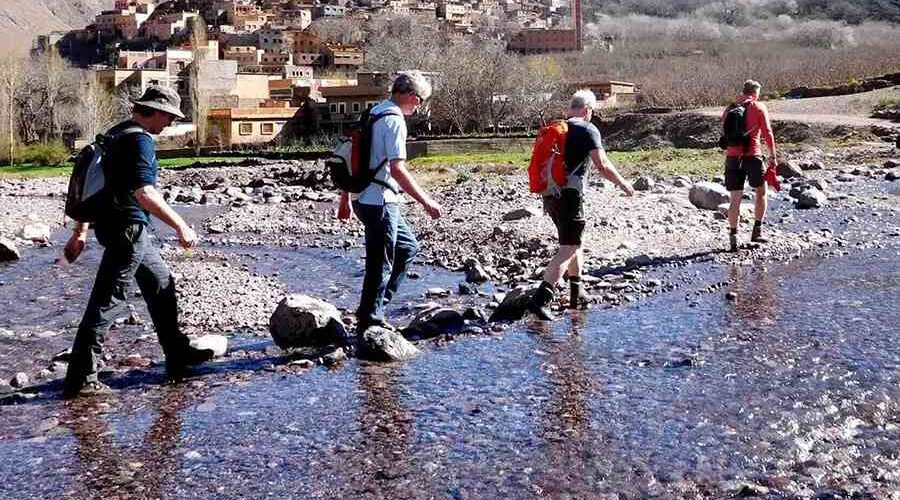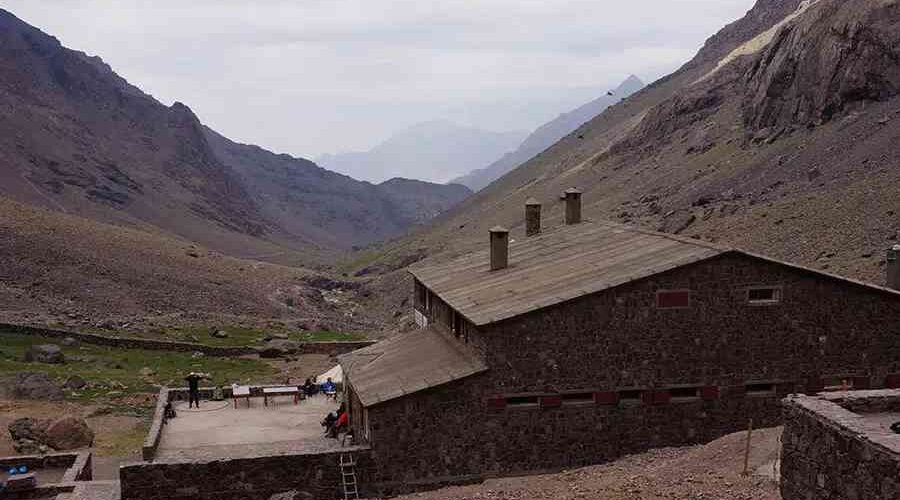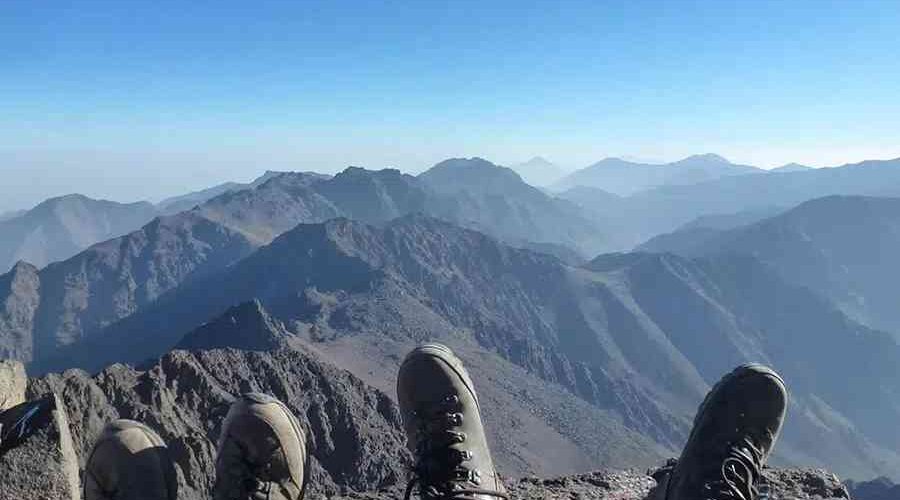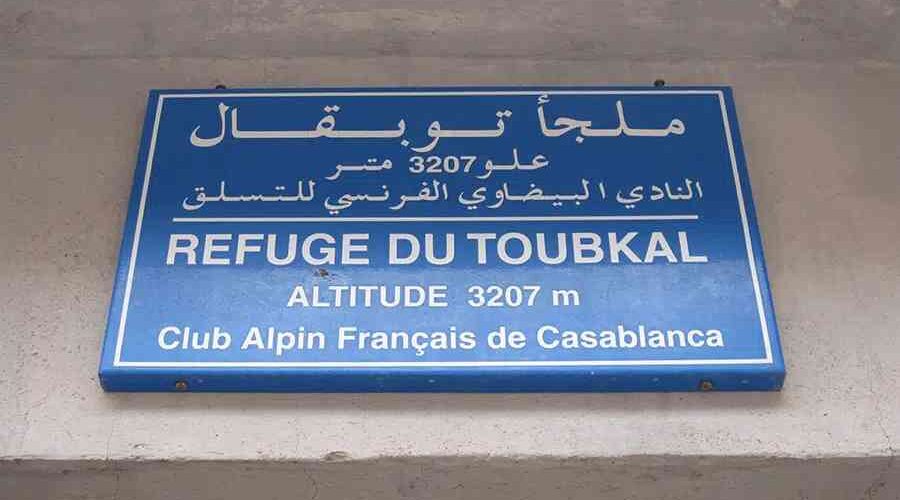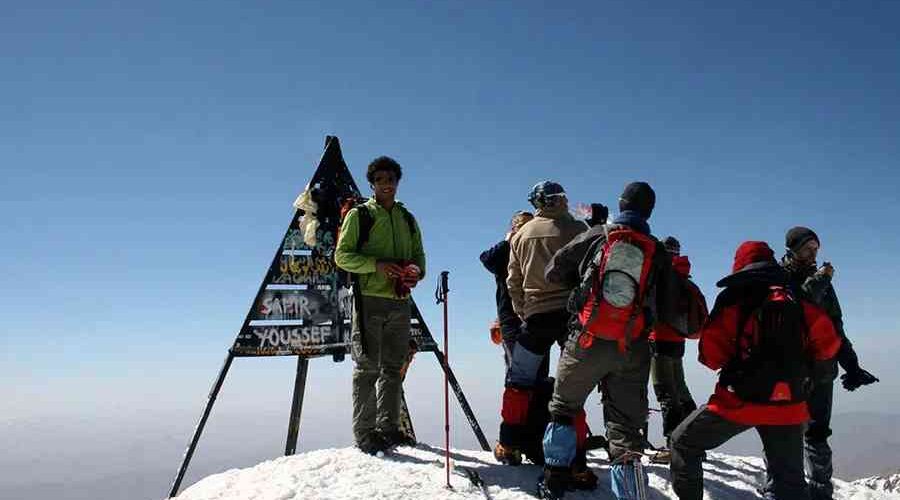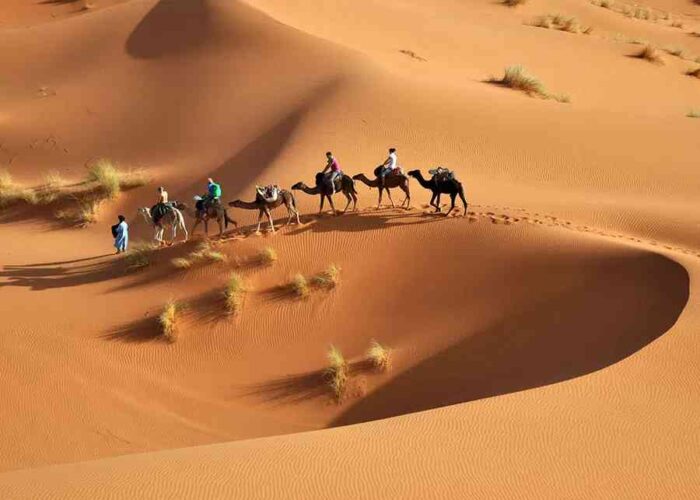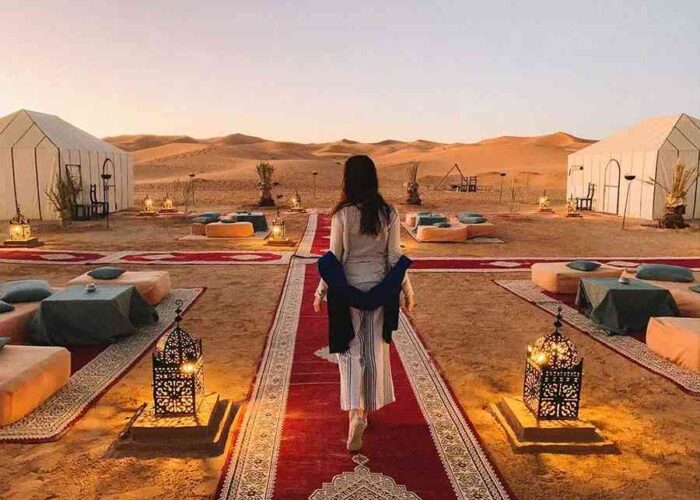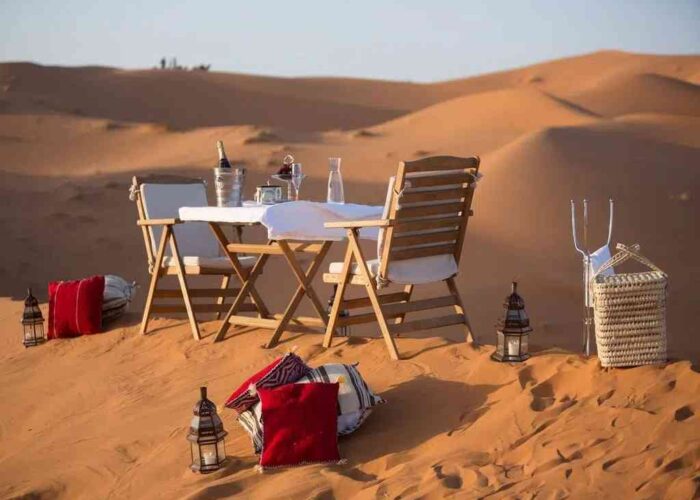5-Day Atlas Mountain Hike overview
Discover the Magic of Mount Toubkal on a 5-Day Trek in the Atlas Mountains! Join us on an unforgettable journey through the heart of North Africa as you ascend to the highest peak in the High Atlas. This moderate hike, suitable for those with basic fitness levels, leads you through stunning landscapes, verdant valleys, and traditional Berber villages. An adventure for all seasons, our trek offers the perfect blend of natural beauty and cultural immersion. Whether a seasoned adventurer or a curious explorer, the Mount Toubkal trek is your gateway to a world of awe-inspiring experiences. Book now and embrace the adventure!
5 DaysToubkal Summit and Berber Villages Trek Highlights
- Enjoy a day hike from The National Park of Toubkal to Oussaden Valley
- Hike past Juniper forests, springs and Berber villages
- Climb up to Aguelzim pass through stiff mule tracks
- Reach the highest point in North Africa: Toubkal Summit
- Climb down to Imlil Village and back to Marrakech
Mt. Toubkal Summit & Berber Villages 5-Day Hike itinerary
Day 1 : Marrakech → Imi Oughlad → Tizi N’tachte → Tiziane
We leave Marrakech early in the morning for our 5-day Toubkal summit and Toubkal trek. We take a pleasant drive south through the curvy road up to Moulay Brahim gorge, the upper valleys, and eventually arrive at the higher foothills of the Western High Atlas Mountains. Our trailhead of Imi Oughlad will pass by Jbel Toubkal, which peak is the highest in North Africa (4167m), Aglzim (3650m), and (Aksoual) 3847m. The heights of all these mountains will be looming before us as we climb up. We descend from our vehicle and meet your guides and the Berber muleteer crew upon our arrival.
We carefully pick the best guides in the area; their local knowledge of Toubkal National Park will make the 5-day trek around the Berber villages much more exciting and worthwhile.
We will then take a 2-hour acclimatization hike upwards in the North-East direction; then we switch back to hike along mule tracks. Our path will lead us through barley corn fields, a forest of pine and juniper trees, to the Tiz n’Tachete (2000m).
We will take a short stop to look back down on Imlil and Ait Oussaden valleys and enjoy the view of Berber villages beautifully scattered all around the mountains, carefully pushed onto the slopes. Then we continue for another half an hour to Imi n’Ifri, where we will have our picnic on the plateau.
After that, we take a slow hike for about two and half hours south-west down along a dirt track, up through Assif n’Ait Oussaden to the ancient red clay terraced village of Tiziane (1750m).
Overnight in a guest house.Day 2 : Tizziane → Tizi N’taghrhourte → T’kint
We start our day with an early breakfast, and then we set off our hike slowly up to the Assif n’Ait Oussaden Valley.
We will pass through walnut groves to Tizi N’taghrhourte (1995m) and arrive at Assaka spring. Here we will be awarded an astounding panoramic sight of the surrounding mountains and vistas. We will take advantage of the beautiful, peaceful nature and have our field picnic, enjoying the silence of the wilderness.
Our afternoon hike will take us down along the edges of the forest until we reach the Berber village of D’knt (1870m) or Agouns n’Assoul, where we will have our dinner Overnight in a Guest house.Day 3 : T’kint → Tizi N’tagdalte -→Azib Tamsoult Hut
We start with an early breakfast to fuel our bodies with the necessary strength for our morning’s 3-hour hike upwards through groves of walnut trees and fields of corn.
Along the way, we will pass by sheep and goat herders. As we wave to them, we will lay our eyes on a group of women and children bent over with 20kg loads of faggots and dried herbs loaded on their backs.
As we pass across the Tizi n’Tagdalte, we continue our hike downhill the juniper trees until we reach a small spring set amongst the trees. We will take a break to enjoy a field picnic.
Once refreshed, we are off down winding tracks of upper slopes for some 3 hours to come to a small river at the beginning of the valley of Assif n’Ait Oussaden. We enter the village of Tizi Oussem (1850m), then up to the summer village Of Tamsoult Overnight in a local hut.Day 4 : Azib Tamsoult Hut → Tizi Agelzim → Toubkal Hut
After breakfast, we set out eastwards on a moderately difficult hike up winding mule tracks to the Tizi Aguelzim (3550m).
we will then take a further 3 hours hike south-east to the Toubkal Refuge, which marks the spring snowline at 3207m, where we shall have our dinner, Overnight in Toubkal Hut.Day 5 : Toubkal Hut → Jbel Toubkal Summit → Imlil → Marrakech
We will wake up a bit earlier today as we are keen on avoiding the heated sun- as long as possible- while climbing the Toubkal Mount. After a 3 hour steep climb, we will reach the top of the highest peak in North Africa- at 4167m.
The panorama from here is simply stunning and will make any physical pain you’re feeling worth it! Whenever you are ready, we shall take the Ikkhibi Sud or South Cirque for a straightforward – with your guide – 2 to 3-hour descent back to the Refuge for a picnic.
After lunch, we shall now set off towards the north along steeply descending, zigzagging trails of the higher slopes of the Valley of the Assif N’isougane N’ouagounss towards the Shrine of Sidi Chamharouch. Set beside a waterfall, There is a pilgrimage ‘Marabout’ shrine here, probably the remnant of a pre-Islamic culture but forbidden to non-Muslims.
Another 2 hours downhill will allow getting to the village of Imlil from where most of the treks start, before taking the car back to Marrakech.
5-Day Trekking in the Atlas Mountains Prices
| Number of Participants: | 1 | 2 | 3 | 4 | 5 | 6 | 7-9 | 10-13 | 14-17 |
|---|---|---|---|---|---|---|---|---|---|
| Price per person: | 700€ | 480€ | 450€ | 420€ | 390€ | 370€ | 360€ | 340€ | 330€ |
| Number of Participants: | Price per person: |
|---|---|
| 1 | 700€ |
| 2 | 480€ |
| 3 | 450€ |
| 4 | 420€ |
| 5 | 390€ |
| 6 | 370€ |
| 7-9 | 360€ |
| 10-13 | 340€ |
| 14-17 | 330€ |
Included
- Return transfer from Marrakech to Imlil (A/C modern vehicle).
- Local licensed English/French speaking mountain guide.
- Mules for luggage and meals transportation.
- Overnight at Toubkal refuge.
- Meals and mineral water (Full board).
Not included
- Hiking equipment ( our guides will assist you rent any equipment needed in Imlil Village)
- Personal expenses.
Tour Map
Frequently Asked Questions
When to hike in Morocco?
Unlike many trekking destinations globally, you can enjoy hiking in Morocco all year long. However, in the snowy winter season, minimum trekking skills are required.
Can I climb Toubkal without a guide?
Hiring a registered local trekking guide to hike Mount Toubkal is now compulsory. There is a checkpoint in Aroumd Village where everyone climbing Jbel Toubkal needs to be registered, and you will not be allowed to go beyond that checkpoint unless a local guide is leading your way. So do not forget to bring your ID for registration purposes.
How hard is it to climb Mount Toubkal?
Most people who are in good shape can climb Mount Toubkal easily. However, the snowy winter season requires a minimum of hiking skills.
How cold is it in the High Atlas Mountains?
The Atlas Mountains temperature in the winter can plummet below freezing falling as low as -20 Celsius (4 degrees Fahrenheit).
What equipment do I need to hike Toubkal Mount in the winter?
Crampons
Ice ax
Sports sunglasses (Cat.3 or 4, 100% UVA/UVB. )
Ski goggles
Wool hat
Sun hat
Buff
Thick gloves.
Is it safe to trek in Morocco?
In general, it is safe to trek in Morocco. However, hiking alone can be dangerous. You will need local registered guides’ advice to choose the routes and safe camping arrangements.
Adding item to wishlist requires an account
Don't have an account? Create one.
You may also like
Morocco Desert Tour From Casablanca Via Chefchaouen & Fes
From€465Take a 6-day tour from Casablanca to Chefchaouen, Fez, the Moroccan Sahara desert, and Marrakech. This will be a spectacular trip that you'll never forget!(617 Reviews)Marrakech To Fes Desert Tour
From€165Combine your stay in Marrakech and Fez with a 3-day Morocco desert tour, ride camels in Erg Chebbi, and camp in Merzouga desert.(1091 Reviews)Private 3-Day Marrakech to Merzouga Desert Tour
From€125Embark on a 3-Day Marrakech to Merzouga Desert Tour. Explore majestic mountains, ancient kasbahs, and sleep under stars in Sahara camps. Adventure awaits!(1266 Reviews)
Nicole D
Trekking through the Atlas Mountains was like writing a love letter to nature. The panoramic views and the chance to learn about Berber culture made it an unforgettable journey.
Priscilla D
Traversing the Atlas Mountains was a journey that resonated with my soul’s longing. The panoramic views and the bonds formed with fellow trekkers were like echoes of belonging.
Hunter Y
In the heart of the Atlas Mountains, I discovered the beauty of being vulnerable in nature. The panoramic views and the bonds formed with fellow trekkers were like brushstrokes of camaraderie.
Charlie T
The Atlas Mountains were my canvas of exploration and introspection. The ever-changing landscapes and the connections with locals made it a journey of significance.
Trent X
Trekking through the Atlas Mountains was like embarking on a pilgrimage of the heart. The diverse terrains and the connections with Berber communities enriched my journey.

